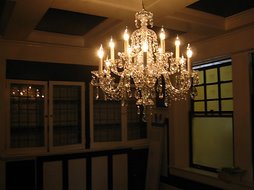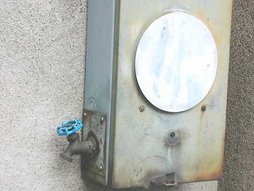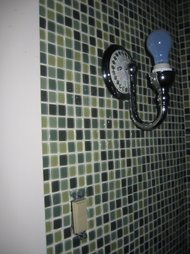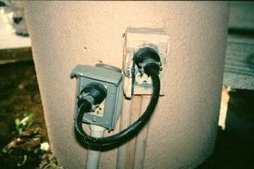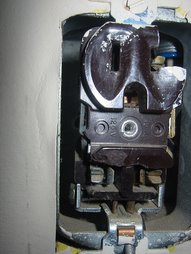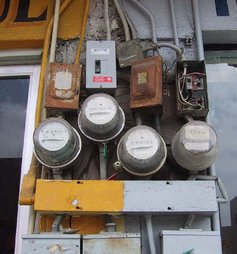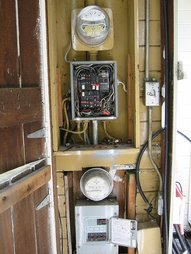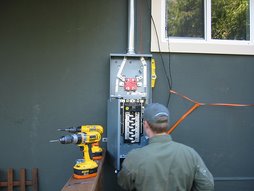Should You Be Doing Electrical Preventive Maintenance?
Introduction
Preventive maintenance is not a new concept. People have been doing precautionary work on motors, engines, and other mechanical systems for decades. But when I suggest doing preventive maintenance on electrical distribution systems, I am often met with incredulous looks and the repeated question, "What for? Nothing moves — what could go wrong?"
Preventing Electrical Failure
A great deal can go wrong if an electrical distribution system is not adequately maintained. As electrical loads cycle between high and low demand, thermal expansion and contraction cause connections to loosen. Electrical panels that are never cleaned accumulate dust and dirt that deposit on these connections. The loose and dirty connections provide a high resistance path that are directly responsible for more than 30 percent of electrical failures. Another 17 percent of electrical failures are attributed to live electrical components being exposed to moisture.
With a comprehensive electrical preventive maintenance program, both of these conditions — which account for almost half of all electrical losses — can be corrected. (See Table 1 below).
TABLE 1: Top Causes of Electrical Distribution System
Loose Connections/parts
|
30.3%
|
Moisture
|
17.4%
|
Line Disturbance (other than lightning)
|
10.4%
|
Defective/inadequate insulation
|
9.9%
|
Lightning
|
8.1%
|
Foreign objects/short circuiting
|
7.3%
|
Collision
|
3.9%
|
Overloading/inadequate capacity
|
2.4%
|
Accumulation of dust, dirt and oil
|
2.2%
|
All other causes
|
8.1%
|
Failures Based on Hartford Steam Boiler Claims Data
According to the Institute of Electrical and Electronics Engineers (IEEE), the failure rate of electrical components is three times higher for systems where preventive maintenance is not performed. This tells us that electrical failures, for the most part, can be avoided. But what does an electrical preventive maintenance (EPM) program entail? There are five points to consider:
- Qualified Personnel
It is important that the people who perform your EPM program be properly trained to work on the specific equipment being maintained or tested. This includes understanding the functionality of the equipment, both electrically and mechanically, and having a thorough knowledge of electrical safety practices and procedures. Special training is required for high-voltage equipment and protective relay devices, so this should not be overlooked.
Regularly Scheduled Inspection, Testing, and Servicing of Equipment An EPM program should be performed on a regular basis. The period between work depends on the environmental conditions, the importance of the equipment and its loading and use. However, EPM should be performed at least once every three years — and more often for critical components.The first step in an EPM program is a complete thermographic inspection of all electrical equipment prior to the scheduled outage. This survey is a non-invasive method of identifying high temperature excursions which indicate potential problem areas due to loose or dirty connections, load imbalances, or improper installation of equipment. This initial step helps in determining the resources you will need during your scheduled outage to perform EPM. Ideally, a thermographic inspection should be done during peak-load conditions by a certified, experienced thermographer. Plans should be made to have all circuit breakers and disconnect switches repeatedly opened and closed during the shut-down period to ensure proper operation. In addition, protective relays and circuit breaker trip devices need to be tested and calibrated on a regular basis. Different test sets are often required for the various equipment depending on the manufacturer and the age of the devices. Therefore, ensure that the people doing this work have the proper equipment, experience, and training to perform these functions. Oil-filled transformers, circuit breakers and disconnect switches should have samples of the insulating oil screen-tested as a means of identifying potential problems with those components. Transformer oil should also undergo dissolved gas analysis to identify specific adverse conditions present inside the unit. Equipment insulated with SF6 gas should be inspected and leak-tested to ensure the integrity of the gas system.
- Sound Judgment in Evaluating Results
It is imperative that the person reviewing the test reports of the thermographic inspection or the equipment tests have a thorough understanding of the specific subject matter. This is important so that informed, responsible decisions can be made on how best to correct the conditions found. For example, the results of transformer oil testing may indicate the need to take action such as reclaiming or replacing the oil. The decision as to which alternative to take needs to be made by an informed individual.
- Perform the Necessary Work
This seems like an obvious point, but often it is not done. It does little good to have testing and inspection done to identify problem areas if you have no intention of fixing the problems. Preliminary testing and inspection help to focus your resources on the critical tasks, but ultimately you need to have scheduled outage to perform the necessary work.The fundamental concept of EPM is simple: Keep it clean, dry, and tight. Be sure to inspect all equipment for evidence of deterioration, exercise mechanisms to ensure proper operation, and clean and tighten all electrical connections and equipment enclosures.
- Concise and Complete Record-Keeping
This is the most overlooked aspect of EPM. However, a clear record-keeping system will help keep the EPM program cost-effective by ensuring that all the work is being done when it is supposed to be. In addition, tracking of test results over time can often identify a potential failure that can be corrected before it happens.
EPM Is Cost-Effective
Electrical preventive maintenance is cost-effective in several different ways. First, it is cheaper to make repairs to equipment before it fails. When electrical equipment fails, particularly protective devices like circuit breakers or relays, there is usually subsequent damage to other components in the system. Often the equipment cannot be repaired and must be completely replaced. New equipment does not always replace the failed component in-kind and may require other modifications to make the system whole.
Failed equipment results in unplanned outages that can be very costly when replacement equipment cannot be easily found. Instead of having a planned system outage for EPM at the most convenient time for your operation, equipment failures are always at inopportune times. Emergency repairs are very costly due to the urgency of the situation where temporary work is required before a permanent repair can be done.
In addition, an effective EPM program will improve equipment efficiency and reduce utility bills. A loose or dirty connection has increased resistance which results in higher power losses. By simply tightening and cleaning electrical connections, you can lower these energy costs. When considered over a period of time, these energy losses can add up to quite a significant amount of money.
If you have been taking your electrical distribution system for granted, it’s probably time for you to implement an EPM program. But don’t wait until after the first electrical failure happens — you may not have a system then.
.JPG)









-1.jpg)

































